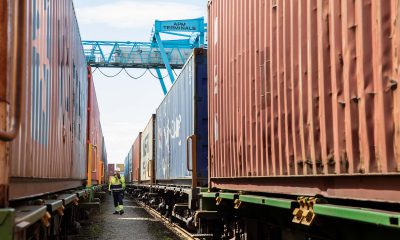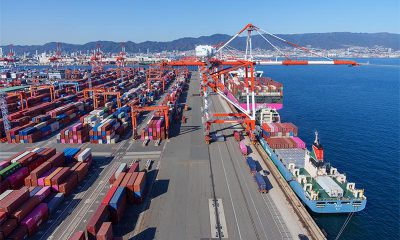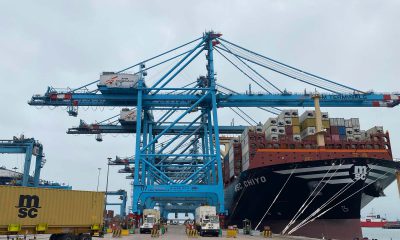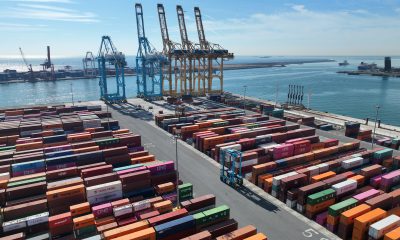Georgia Ports Authority Executive Director Griff Lynch said GPA’s Network Georgia plan to develop rail hubs around the state is gaining momentum, with federal environmental approval for an inland terminal near Gainesville, Ga.
“Our expanding network is increasing rail capacity and connectivity between the port and major manufacturing sites around the state,” said GPA Executive Director Griff Lynch. “Moving more cargo by rail eases interstate traffic and reduces the carbon footprint of the state’s logistics industry by making the most efficient use of the Georgia’s logistics infrastructure.”
GPA recently received NEPA (National Environmental Policy Act) approval for the Northeast Georgia Inland Port in the Gainesville-Hall County area. The Authority will now finalize a grant agreement with the U.S. Department of Transportation Maritime Administration, and then move on to construction. MARAD has awarded GPA a grant of up to $46.8 million to build a new inland container port along the I-85/I-985 corridor. Earthwork is slated to begin in July, with terminal construction scheduled to begin January 2024 and wrap up by July 2026.
Georgia Ports anticipates the inland rail hub will open with volumes of 60,000 containers per year. With the roundtrip truck route totaling 602 miles, this opening volume would alleviate approximately 36 million truck miles on Georgia highways in the terminal’s first year of operation. GPA estimates 46 of truck traffic between Northeast Georgia and Savannah will use rail instead. Cargo moving to the region by rail will reduce truck use from seven hours to less than 30 minutes. The shift will avoid 1.6 billion tons of carbon dioxide (CO2e) emissions by 2054, Lynch said.
“The Northeast Georgia Inland Port will create 20 new direct jobs,” said Stacy Watson, GPA director of economic and industrial development. “However, the rail hub will deliver other opportunities for employment and economic growth as industry is drawn to its logistical benefits. That’s a dynamic we’ve already seen with our Appalachian Regional Port.”
GPA’s first inland terminal, the ARP is celebrating its fifth year of operation with strong volumes. For the fiscal year to date through April, the ARP has handled 28,552 containers, an increase of 23 percent or 5,400 containers compared to the same period last year.
Economic impact from the ARP includes GE Appliances’ $32 million Southern Logistics Center in Murray County, just two miles from the inland terminal. Additionally, Huali Floors has established its first U.S. headquarters and manufacturing facility in Murray County, a $27 million project. Other developments include SK Battery in the Rome-Cartersville area, and the fourth expansion of Hanwha’s solar panel factory.
In West Central Georgia, the Authority has also acquired the site for another new inland port in LaGrange. The 200-acre parcel is adjacent to CSX rail and features easy access to Interstates 85 and 185. While the GPA does not yet have a development schedule for the property, the site could eventually serve the nearby auto plant of Kia Motors Manufacturing Georgia, as well as other importers and exporters in the region.
At the Port of Savannah, construction of the Mason Mega Rail Terminal has increased rail capacity to 1 million containers per year, rerouted Norfolk Southern trains away from neighborhood crossings, and brought rail switching onto the port.
“It’s been mutually beneficial to the port and our neighbors, by increasing our capability while simultaneously improving quality of life in our surrounding communities,” Lynch said. “Expansion projects spanning our berths, terminal space and rail infrastructure are delivering the capacity we need to handle our projected growth for decades to come.”
The Georgia Ports Authority recorded its third busiest April ever last month, with 408,686 twenty-foot equivalent container units of cargo, behind April 2022 (495,782 TEUs) and April 2021 (466,633). The port’s volume last month constituted a 12 percent increase over its pre-pandemic performance in April 2019, when Garden City Terminal handled 364,481 TEUs.

























